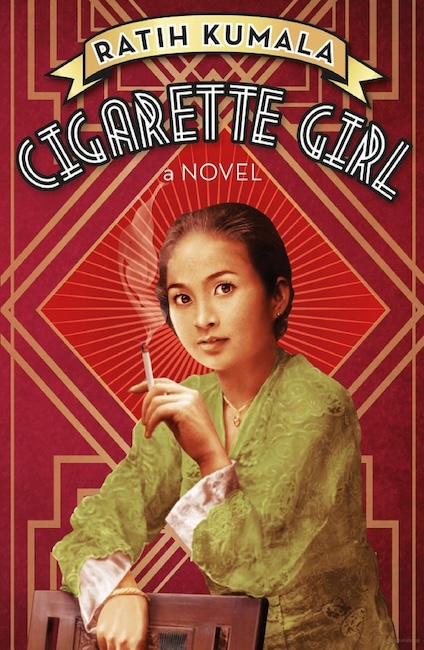Netflix’s series Gadis Kretek (Cigarette Girl) romanticises an industry that kills around 290,000 Indonesians each year
Inspired by Ratih Kumala’s novel, Gadis Kretek (Cigarette Girl), which blends business and romantic intrigue with mythology and historical events, the new Netflix series paints an appealing portrait of Indonesia’s cigarette market, which is the world’s second largest. Indonesians smoke over 300 billion cigarettes a year. About two out of three Indonesian men smoke, and secondhand smoke is present in the majority of homes and workplaces.
Netflix justifies its idealised depiction of the Indonesian cigarette industry by situating it in the past, rendering it as exotic, indigenous, and artisanal, and incorporating passing references to its health consequences. Such nostalgic representations of the past, however, perform political work in the present.
Clove-laced cigarettes called kretek, in onomatopoeic reference to the crackling sound they make when clove fragments ignite, constitute 95 percent of the Indonesian cigarette market. Industry proponents use the clove ingredient, which is indigenous to Indonesia’s Spice Islands of Maluku, to claim that the commodity represents unique national cultural heritage and merits state protection. Kretek nationalist organisations frame tobacco control efforts as neocolonial propaganda, and claim to act on behalf of ordinary farmers, factory workers, home industries, petty vendors, and smokers rather than their large corporate sponsors. Cigarette Girl’s idyllic imagery bolsters this position, and indeed these groups have applauded Kumala’s book and the Netflix series with its star-studded cast.
The charismatic commodity at the centre of Cigarette Girl and kretek nationalist ideology is the hand-rolled kretek. But the reality of Indonesia’s kretek industry is far removed from the artisanal scenes marketed by Netflix and kretek nationalist ideology. Today only twenty percent of kretek are hand-rolled, and the female piece rate workers who make them labor under grueling time pressure to produce 300 to 600 kretek an hour. Seventy-five percent of kretek are produced on machines that manufacture 10,000 cigarettes a minute.

Flashing back from 2001 to the 1960s and 70s, the Netflix series incorporates fleeting references to the public health consequences of tobacco. Anti-tobacco posters briefly appear on hospital walls. The wealthy playboy son of a renowned cigarette company owner reminds his father that he suffers from a (unspecified) cancer and removes a cigarette from his hand. Between phlegmy coughs, the father protests that everyone dies anyway and the kretek was originally created as medicine. The son meets his romantic interest in one of Java’s industry-sponsored kretek museums. A doctor who insists that she detests cigarettes because they cause illness, she too confiscates a cigarette from an old man, advising him to quit for his health.
Cigarettes may be bad for the cancer-ridden and elderly, but they appear as an unadulterated good for attractive youth and a key feature of ritual hospitality, masculine marketplace sociality, and feminist consumption. In every other scene where cigarettes appear — and there are so many — they appear as sensuous, savored companions to thought, feeling, and action. By the end, even the doctor has capitulated and smokes a cigarette in an act that evokes profound communion with her deceased mother.
The Cigarette Girl series condemns the Indonesian political massacres of the 1960s, in which 500,000 civilians were killed, while suspending critique of the industry responsible for Indonesia’s ongoing public health massacre. Netflix’s period drama approach to an addictive commodity feels at times like a five-hour advertisement. This sits in stark contrast to Netflix’s hard-hitting industry exposés of Purdue Pharma’s Oxycontin (the docudrama Painkiller) and Juul (the documentary Big Vape) in the United States, which are clearly meant to foster informed critique. Netflix’s deployment of such opposing genres to explore addictive commodities in different countries suggests a comparative disregard and discounting of Indonesian lives.
Since the 1970s, large kretek producers have mechanised and adopted global Big Tobacco’s aggressive marketing tactics and deceptive engineering of purportedly safer ('light' or 'mild') kretek. Their tactics were so successful that the non-clove 'white cigarettes' (rokok putih) that dominated Indonesia’s cigarette market through the 1960s today account for a mere five percent of market share. Around forty percent of today’s kretek market is controlled by foreign companies (led by Philip Morris International, British American Tobacco, and Japan Tobacco International) that saturate nighttime TV and public space with their advertising, and contract young influencers to promote their product through social media.
Cigarette Girl ultimately shores up the position of powerful tobacco interests in Indonesia and weakens that of tobacco control activists, who are already the target of condemnation as national traitors and even face death threats for questioning the industry. By romanticising the Indonesian cigarette industry as a distinctive local tradition, Cigarette Girl helps undermine Indonesian tobacco control activists’ quest for social justice and the right to industry regulation, an environment free of smoke and cigarette advertising, and a healthier and more prosperous future for Indonesian citizens.
Marina Welker is associate professor of anthropology at Cornell University. Her book, Kretek Capitalism: The Making, Marketing and Consumption of Clove Cigarettes in Indonesia, will be published by University of California Press in Spring 2024. This article was first published on the now defunct The Messenger news website.












